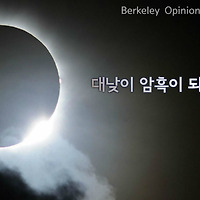Einstein’s Theory of Gravitational Waves Proven
By: Michelle Lee | English Columnist
On October 16th, the LIGO Lab located in the U.S. detected evidence that proved Einstein’s Theory of Gravitational Waves to be correct again. LIGO, Laser Interferometer Gravitational-Wave Observatory, is a facility that detects gravitational waves using the ripples it cause on the extremely sensitive lasers that stretch out a distance of 4 kilometers underground. So what exactly happened at the laboratory? Before we delve into the depths of how the discovery happened, there are two main ideas we must comprehend in order to understand this revolutionary discovery.
Spacetime
We are all familiar with the dimensional description of our universe. We are taught that the first dimension is a dot, the movement of that dot along the x and y axis of a flat surface is called the second dimension, and the third dimension is when a plane acquires depth and thus can move around the axis of x, y, and z. The fourth dimension is the space of the third dimension with the addition of time, thus term “spacetime.”
We enter the brain of one of the most highly acclaimed geniuses of the past century, Albert Einstein. In Einstein’s miracle year of 1905, he published four major articles regarding special and general relativity, the photoelectric effect (the ejection of electrons due to the absorption of energy usually in the form of waves), and his famous equation E = mc^2. But, in order to talk about all four of those theories, we would have to be talking for ages, so let’s just focus on the second discovery. Based on the theory of general relativity, in 1915, he proposed a theory that the Earth we live in and our entire universe can be described using “spacetime” and gravity.
Gravity
Gravity is the force of attraction two bodies of mass exert on each other and often we can see them orbiting each other either in a solar system or even in a binary star form. In the universe Einstein describes, spacetime is not a mere concept but can be visualized into a gridded fabric and the stellar bodies as marbles with different masses. In his mind, the all the stars, galaxies and planets have a place on one individual point on the grid. The more massive the body is, the body will press down on the fabric on varying degrees. For example, a star 100 times the mass of the Sun would press down more and distort the shape of the fabric in a more extreme manner than a star 5 times the mass of the Sun. Imagine setting a heavy body in the center of a trampoline. The body would press down into the fabric, causing it to dimple. Then imagine rolling a marble around the heavy body. The marble will spiral inward, towards the body, pulled in the same way the gravity of a star pulls in a planet.
Although this theoretical concept of spacetime cannot be seen in real life, there are multiple ways to measure it. The method that collected evidence that proved the theory to be true was the detection of gravitational waves.
What happened? And how did we detect it?
Violent events such as stars or black holes colliding cause ripples within this fabric of spacetime and creates fluctuations in gravitational waves. Basically, the gravity of nearby objects is distorted due to the collision of such large bodies.
1.3 billion years ago, two black holes, 49 times the mass of the sun once combined, crashed into each other and thus generated gravitational waves. This ripple traveled throughout the universe and arrived at Earth in the end of 2015 and was detected by LIGO.
During the experiment, a laser beam is split equally between two arms. At the end of each arm is a mirror, which reflects the laser back to the starting point. What LIGO looked for was evidence that gravitational waves are distorting spacetime enough that one of the arms becomes temporarily longer than the other. These changes can be incredibly tiny; as small as the width of a proton, The discovery that concluded the existence of gravitational waves was a mere 7 x 10^-19 meters of a difference.
Scientists at the LIGO laboratory were able to record the sound of the ripple in gravitational waves.
https://www.youtube.com/watch?v=TWqhUANNFXw
This discovery, though as simple as this recording sounds, proves the theories behind how our universe is formed and eventually led to a Nobel Physics prize for the two LIGO researchers/ physicists, Kip Thorne and Rainer Weiss. I’m excited to see what complex and exotic discoveries humans make as they venture through space and technology.
<Sources>
Cho, Adrian. “Gravitational Waves, Einstein's Ripples in Spacetime, Spotted for First Time.” Science, Science, 11 Feb.
2016, www.sciencemag.org/news/2016/02/gravitational-waves-einstein-s-ripples-spacetime-spotted-first-time.
Einstein, A (June 1916). "Näherungsweise Integration der Feldgleichungen der Gravitation".
Sitzungsberichte der Königlich Preussischen Akademie der Wissenschaften Berlin. part 1: 688–696.
Kluger, Jeffrey. “Einstein Was Right: Gravitational Waves Seen for Third Time.” Time, Time, 1 June 2017,
time.com/4801186/gravitational-waves-albert-einstein-theory/
Redd, Nola Taylor. Space.com. “Einstein's Theory of General Relativity.”Space.com, Space.com, 12 July 2016,
www.space.com/17661-theory-general-relativity.html.
Resnick, Brian. “Gravitational Waves, Explained.” Vox, Vox, 3 Oct. 2017,
www.vox.com/science-and-health/2017/10/3/16408730/nobel-prize-2017-physics-graviational-waves-ligo-kip-thorne-rainer-weiss-barry-barish-virgo.
Image:
https://www.vanderbilt.edu/usli/2016/10/10/gravitational-waves-the-genius-of-einstei n-proven-100-years-later/
https://www.quora.com/What-is-a-black-hole-How-will-the-space-time-change-around-it
'EDITORIAL > 과학 :: Science & Tech' 카테고리의 다른 글
| 원전, 대한민국의 맞춤 전략을 버릴 수 없다 (0) | 2017.11.09 |
|---|---|
| 3D Printed Values (0) | 2017.11.08 |
| 대낮이 암흑이 되어버리는 마법 (4) | 2017.09.26 |
| 세상에서 가장 검은색 (3) | 2017.04.18 |
| 혁신적인 미래의 식품, 친환경육 (1) | 2017.02.28 |




